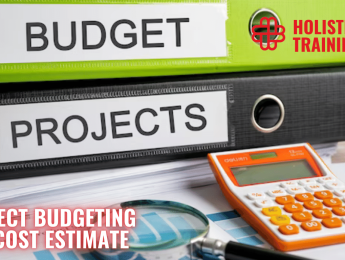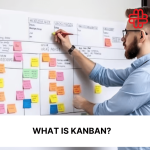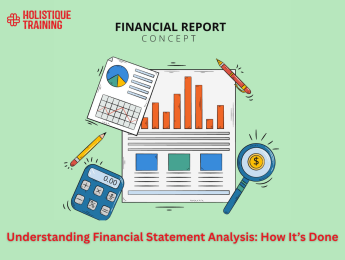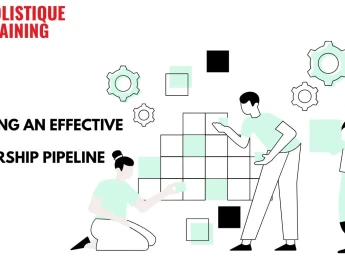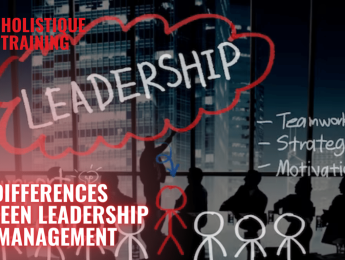- Table of Contents
- Introduction
- What Is Cost Estimation in Project Management?
- The Importance of Accurate Cost Estimation
- Budget Planning
- Resource Allocation
- Risk Mitigation
- Decision Making
- Stakeholder Confidence
- Project Control
- How to Estimate Project Cost
- Analogous Estimation
- Bottom-Up Estimation
- Parametric Estimation
- Three-Point Estimation
- Your Role in Budgeting and Estimation as a Project Manager
- 1- Understand Project Scope
- 2- Involve the Right Experts
- 3- Define Work Breakdown Structure (WBS)
- 4- Assess Resource Requirements
- 5- Leverage Historical Data
- 6- Account for Contingencies
- 7- Regularly Monitor and Control Costs
- The Changing Landscape of Budgeting: How Project Managers Fare Today
- Embracing Agile Methodologies
- Leveraging Project Management Software
- Collaborating with Finance Professionals
- Implementing Robust Cost Control Mechanisms
- Emphasising Continuous Improvement
- The Human Element in Cost Estimation
- Expert Judgement
- Communication and Collaboration
- Risk Assessment
- Real-Time Adaptation
- Emerging Trends in Cost Estimation
- Artificial Intelligence (AI) and Machine Learning
- Blockchain for Transparent Cost Tracking
- Environmental and Sustainability Considerations
- Data-Driven Benchmarking
- Virtual Reality (VR) for Visualisation
- Conclusion
Introduction
Effective project management involves careful planning and allocation of resources, with cost estimation playing a pivotal role in ensuring project success. Accurate cost estimation allows project managers to determine the financial requirements of a project, allocate resources efficiently, and make informed decisions throughout the project lifecycle. In this comprehensive guide, we will delve into the significance of cost estimation in project management, explore various methods for estimating project costs, discuss the crucial role of project managers in budgeting and estimation, and examine how the landscape of budgeting in project management has evolved in recent years.
What Is Cost Estimation in Project Management?
Cost estimation in project management is the process of predicting the financial investment required to complete a project successfully. It involves assessing and quantifying the resources, efforts, and activities needed to achieve project objectives. Cost estimation enables project managers to develop realistic budgets, establish project feasibility, and monitor financial performance throughout the project's duration.
The Importance of Accurate Cost Estimation
Accurate cost estimation serves as the cornerstone of effective project management. It offers several key benefits:
Budget Planning
Cost estimation helps project managers create comprehensive budgets covering all project aspects. This ensures adequate financial resources are allocated to each task and the project remains financially viable. Furthermore, accurate budget planning enhances transparency and accountability, allowing stakeholders to understand how project funds will be utilised.
Resource Allocation
By accurately estimating costs, project managers can allocate resources efficiently. This includes personnel, equipment, materials, and other assets, ensuring that they are available when needed. Efficient resource allocation minimises the likelihood of resource shortages or surpluses, contributing to smoother project execution.
Risk Mitigation
Cost estimation also plays a role in risk management. By identifying potential cost overruns early in the project, project managers can take proactive steps to mitigate these risks and keep the project on track. Additionally, having a well-estimated budget allows for the allocation of contingency reserves, which act as a safety net to address unexpected challenges without disrupting the project's flow.
Decision Making
Throughout the project lifecycle, project managers must make critical decisions. Accurate cost estimates provide the data needed to make informed choices about scope changes, resource allocation, and project priorities. For example, if a project is trending over budget, project managers can use cost estimates to evaluate options for cost reduction or resource reallocation.
Stakeholder Confidence
Accurate cost estimation enhances stakeholder confidence. When project stakeholders, including clients, investors, and team members, have confidence in the project's financial management, they are more likely to support the project and remain engaged. This trust is crucial for building strong project partnerships and ensuring long-term success.
Project Control
As the project progresses, cost estimation serves as a benchmark for measuring performance. Project managers can identify discrepancies and deviations early by comparing actual expenses to the estimated budget. This enables timely corrective actions, ensuring that the project stays on course and minimising the potential for cost overruns.
Aspect | Budgeting | Estimation |
Nature | Fixed financial plan | Predicted costs |
Timing | Future-oriented | Pre-project phase |
Puprose | Financial control | Project Feasibility |
Accuracy | Precise figures | Approximate values |
Scope | Overall project | Specific components |
Frequency | Periodic updates | Continuous process |
Flexibility | Limited adjustments | Adaptable to change |
Table 1: Differences between budgeting and estimation
How to Estimate Project Cost
Estimating project costs can be a complex task, as it requires considering multiple variables and uncertainties. However, following established methodologies and best practices can significantly enhance the accuracy of cost estimates. Let's explore some of the commonly used techniques for estimating project costs:
Analogous Estimation
Analogous estimation relies on historical data from similar past projects to forecast costs for the current project. Project managers can derive cost estimates based on previous project outcomes by identifying and comparing similarities between projects. This method is useful when limited project details are available in the early stages.
Historical data can be a treasure trove of information for project managers. When employing analogous estimation, it's essential to identify similar past projects and critically analyse the factors that made them similar or different. This nuanced understanding allows project managers to make more accurate adjustments to the cost estimates. Additionally, updating historical data with the latest market trends and inflation rates is crucial to ensure the relevance of the estimates.
Bottom-Up Estimation
Bottom-up estimation involves breaking down the project into smaller tasks or work packages and estimating the costs for each individual component. The detailed estimates are then aggregated to determine the total project cost. This method provides a more accurate estimation but requires significant time and effort.
While bottom-up estimation is labor-intensive, its granularity provides several advantages. It allows project managers to identify potential cost drivers at the task level, facilitating targeted cost control efforts. Moreover, it enhances project transparency, as stakeholders can clearly see how costs are distributed across various project components. However, it's crucial to strike a balance between granularity and efficiency, as excessive detail can lead to administrative overhead.
Parametric Estimation
Parametric estimation involves using mathematical models and statistical techniques to estimate costs based on specific project parameters, such as size, complexity, or duration. This method relies on historical data and predefined formulas to calculate project costs. Parametric estimation is particularly effective for repetitive projects with well-defined patterns.
The strength of parametric estimation lies in its ability to harness the power of data and mathematical models. Project managers should continuously refine the formulas and models based on real-world project data to maximise the accuracy of parametric estimates. Regularly updating these parameters ensures that estimates remain relevant in an ever-changing project environment. Additionally, having a solid understanding of the underlying assumptions and variables in the parametric model is essential to interpret the results effectively.
Three-Point Estimation
Three-point estimation, also known as the PERT (Programme Evaluation and Review Technique), considers three different scenarios for each cost estimate: the best-case, worst-case, and most likely-case scenarios. Project managers can calculate the expected cost by assigning probabilities to each scenario using the formula: (Best Case + 4 x Most Likely Case + Worst Case) / 6. This method accounts for uncertainties and provides a more realistic cost estimate.
Three-point estimation is a powerful tool for managing project uncertainty. To enhance its effectiveness, project managers should involve team members and subject matter experts in the estimation process to gather diverse perspectives on what constitutes best-case, worst-case, and most likely scenarios. Additionally, periodically revisiting and updating the estimates as the project progresses helps in adapting to changing circumstances and refining the accuracy of the expected cost.
Scenario | Cost Estimate | Probability |
Best Case | $100,000 | 10% |
Most Likely Case | $150,000 | 70% |
Worst Case | $200,000 | 20% |
Expected Cost | $150,333 | N/A |
Table 2: Three-Point Estimation Example
Your Role in Budgeting and Estimation as a Project Manager
As a project manager, you play a crucial role in the budgeting and estimation process. Here are some key responsibilities and best practices to ensure effective cost estimation:
1- Understand Project Scope
Thoroughly comprehending the project's objectives, requirements, and deliverables is fundamental to accurate cost estimation. A clear understanding of the scope enables you to consider all necessary resources and activities in your estimates. Moreover, this understanding allows you to anticipate potential scope changes and their impact on the budget, ensuring that your estimates remain adaptable to evolving project needs.
2- Involve the Right Experts
Collaborating with subject matter experts, stakeholders, and team members is essential for gathering valuable insights and knowledge. These individuals bring expertise in specific domains, which can significantly contribute to estimating costs associated with specialised project components. Their input helps ensure that no critical cost drivers or resource needs are overlooked.
3- Define Work Breakdown Structure (WBS)
Creating a comprehensive Work Breakdown Structure (WBS) that breaks down the project into smaller, manageable tasks is a pivotal step in cost estimation. It enables more accurate estimation by focusing on specific work packages rather than estimating the entire project as a whole. Additionally, a well-structured WBS serves as a roadmap for project execution, facilitating resource allocation and project control.
4- Assess Resource Requirements
Identifying the resources, including personnel, equipment, and materials, required to complete each task in the project is essential for accurate cost estimation. Understanding the resource needs allows for better cost estimation and resource allocation. Moreover, it helps in aligning human resources effectively, ensuring that the right skill sets are available when needed.
5- Leverage Historical Data
Analysing data from previous projects to identify patterns, lessons learned, and cost benchmarks is a valuable practice. Historical data provides insights into how similar projects performed in terms of cost, allowing you to make informed adjustments to your estimates. Continuously updating and enriching this data with new project information ensures that your estimates remain relevant and reflective of industry trends.
6- Account for Contingencies
Incorporating contingency reserves into your cost estimates is essential to account for unforeseen risks and uncertainties. This buffer helps mitigate potential cost overruns and ensures financial resilience during the project. Proactively planning for contingencies reduces the likelihood of budgetary surprises and demonstrates prudent financial management to stakeholders.
7- Regularly Monitor and Control Costs
Continuously tracking and monitoring project costs against the estimated budget throughout the project's lifecycle is a vital responsibility. Effective cost control mechanisms, such as regular budget reviews, variance analysis, and change management processes, enable you to manage deviations and promptly take corrective actions. Regular communication with stakeholders regarding cost performance fosters transparency and builds confidence in your ability to manage project finances effectively.
The Changing Landscape of Budgeting: How Project Managers Fare Today
In recent years, the landscape of budgeting in project management has experienced notable changes. In fact, statistics show that the 55% of project managers cite budget overrun as a reason for project failure., indicating a continuous improvement in budget control and management. This is due to technological advancements, increasing emphasis on data-driven decision-making, and a growing awareness of the importance of cost control. Project managers are adapting to new practices and strategies to improve budgeting outcomes. Let's take a closer look at how project managers are faring in budgeting nowadays:
Embracing Agile Methodologies
Traditional project management methodologies often struggled to address budgeting challenges effectively. However, adopting Agile methodologies has shifted project management practices, enabling project managers to manage budgets better. Agile frameworks, such as Scrum or Kanban, emphasise iterative and incremental development, allowing project managers to adjust costs and priorities based on evolving requirements. By fostering flexibility and adaptability, Agile methodologies contribute to improved budgeting and cost control.
Leveraging Project Management Software
The rise of project management software has revolutionised the way project managers handle budgeting. These tools offer robust cost estimation, tracking, and resource allocation features, streamlining the budgeting process and enhancing accuracy. Project managers can leverage real-time data, generate comprehensive reports, and visualise cost trends, enabling more informed financial decision-making. The use of dedicated software has empowered project managers to better monitor expenses, identify potential cost overruns, and take timely corrective actions.
Collaborating with Finance Professionals
Recognising the significance of financial expertise, project managers are increasingly collaborating with finance professionals to ensure sound budgeting practices. Project managers gain insights into financial regulations, cost accounting principles, and risk management strategies by involving financial experts in the project planning and estimation phase. This collaboration helps project managers develop realistic budgets, align financial objectives with project goals, and optimise cost control measures.
Implementing Robust Cost Control Mechanisms
Project managers today are more vigilant in monitoring and controlling project costs throughout the project lifecycle. By implementing robust cost control mechanisms, such as regular budget reviews, variance analysis, and change management processes, project managers can promptly identify deviations, track expenditures, and mitigate potential risks. Proactive cost control ensures that projects stay within budgetary limits, reducing the chances of budget overruns and enhancing financial stability.
Emphasising Continuous Improvement
The modern project management landscape strongly emphasizes continuous improvement. Project managers are keen on learning from past experiences, analysing lessons learned, and applying best practices to future projects. By fostering a culture of continuous improvement, project managers are proactively seeking opportunities to refine their budgeting skills, enhance cost estimation accuracy, and strengthen overall budget control.
The Human Element in Cost Estimation
While methodologies and tools play a significant role in cost estimation, it's crucial not to overlook the human element in this process. Project managers often rely on their experience, intuition, and communication skills to bridge gaps in data and navigate uncertainties. Here's why the human touch in cost estimation matters:
Expert Judgement
Project managers bring a wealth of experience to the table, and this experience is invaluable in making informed estimates. They can draw from past projects, assess the nuances of the current one, and apply their judgment to refine cost estimates. Expert judgment is particularly vital in situations where historical data may not fully align with the unique characteristics of the project at hand.
Communication and Collaboration
Effective communication and collaboration with project stakeholders are essential for gathering information and insights that impact cost estimates. Project managers must maintain open communication lines with team members, subject matter experts, and clients to ensure that all relevant information is considered. Engaging stakeholders in the estimation process also fosters a sense of ownership and alignment with the project's financial goals.
Risk Assessment
The human element also plays a crucial role in risk assessment. Project managers can identify potential risks that may affect project costs and incorporate risk mitigation strategies into their estimates. By leveraging their ability to foresee challenges and proactively plan for them, project managers add an extra layer of protection against cost overruns.
Real-Time Adaptation
In dynamic project environments, the ability to adapt and adjust estimates in real-time is essential. Project managers can recognise early warning signs of budgetary deviations and take swift corrective actions. This agility is a powerful asset in ensuring the project remains financially on course.
Emerging Trends in Cost Estimation
The landscape of cost estimation in project management is continually evolving, driven by technological advancements and changing industry dynamics. Here are some emerging trends that are shaping the future of cost estimation:
Artificial Intelligence (AI) and Machine Learning
AI and machine learning are revolutionising cost estimation by analysing vast datasets, identifying patterns, and making predictions with remarkable accuracy. These technologies can consider a multitude of variables simultaneously, offering more sophisticated and data-driven estimates. Project management software equipped with AI capabilities can provide real-time insights, helping project managers make informed decisions.
Blockchain for Transparent Cost Tracking
Blockchain technology is gaining traction in project management for its ability to provide transparent and tamper-proof records of financial transactions. By integrating blockchain into cost tracking, project managers can ensure the integrity of financial data. This enhances trust among stakeholders and reduces the risk of fraud or data manipulation, especially in large-scale projects with complex financial ecosystems.
Environmental and Sustainability Considerations
With growing environmental concerns, cost estimation is increasingly factoring in sustainability-related costs. Project managers are considering the expenses associated with eco-friendly materials, energy-efficient technologies, and compliance with environmental regulations. Accurate estimation of these costs not only aligns projects with sustainability goals but also prepares organisations for a future where environmental impact is a significant financial consideration.
Data-Driven Benchmarking
Access to large datasets and advanced analytics tools enables project managers to benchmark their cost estimates against industry standards and best practices. This data-driven approach helps organisations set realistic financial targets and identify areas where cost optimisation is possible. It also promotes a culture of continuous improvement, where projects learn from each other's successes and failures.
Virtual Reality (VR) for Visualisation
Virtual Reality is finding applications in cost estimation by providing immersive visualisations of project components. Project managers can walk through virtual models of construction sites, manufacturing facilities, or complex infrastructure projects to better understand cost drivers and potential challenges. This enhanced visualisation can lead to more accurate estimates and improved resource allocation.
As project management continues to evolve, so too must cost estimation practices. Embracing emerging trends and technologies can enhance the accuracy and effectiveness of cost estimates, ultimately leading to more successful projects. Project managers who stay informed about these developments and adapt their approaches accordingly are poised to excel in the ever-changing landscape of project cost estimation.
Conclusion
Accurate cost estimation is a fundamental aspect of successful project management. It empowers project managers to make informed decisions, optimise resource allocation, and ensure financial stability throughout the project's lifecycle. By employing appropriate estimation techniques and following best practices, project managers can enhance the accuracy of cost estimates and lay a strong foundation for project success. Embracing their role in budgeting and estimation, project managers can drive efficiency, transparency, and financial control in their projects, ultimately leading to successful outcomes. To further enhance your skills in comprehensive project cost estimating, budgeting, and value management, consider enrolling in our course, ‘Comprehensive Project Cost Estimating, Budgeting and Value Skills.’ Gain practical knowledge and insights from industry experts to manage project finances and achieve project objectives.


